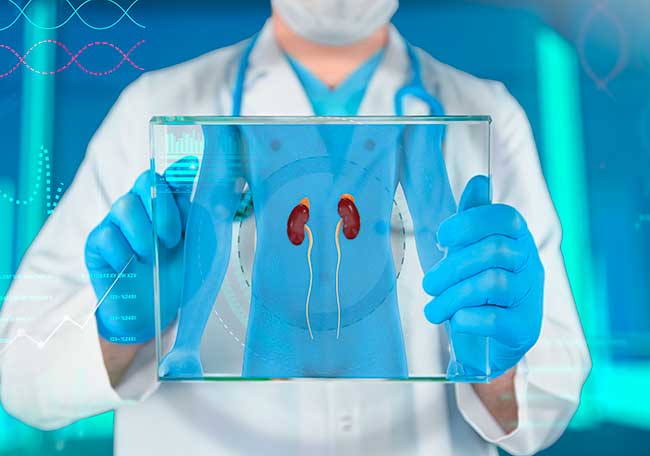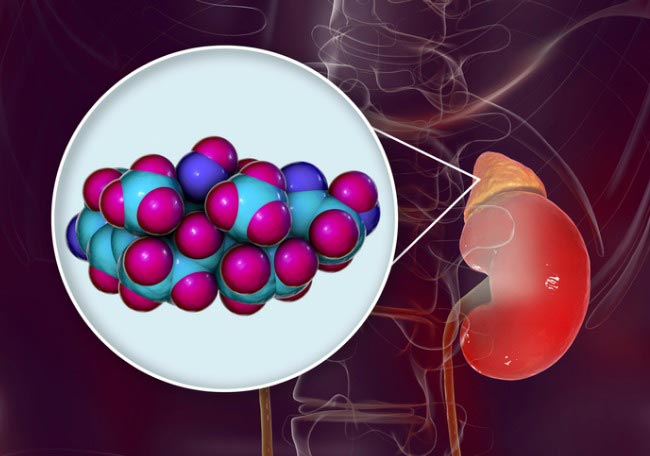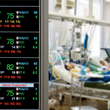Insuficiencia suprarrenal

1 Arlt W, Allolio B. Adrenal insuffi ciency. Lancet 2003; 361: 1881–93.
2 Bornstein SR. Predisposing factors for adrenal insuffi ciency. N Engl J Med 2009; 360: 2328–39.
3 Neary N, Nieman L. Adrenal insuffi ciency: etiology, diagnosis and treatment. Curr Opin Endocrinol Diabetes Obes 2010; 17: 217–23.
4 Addison T. On the constitutional and local eff ects of disease of the supra-renal capsules. London: Samuel Highley, 1855.
5 Løvås K, Husebye ES. Addison’s disease. Lancet 2005; 365: 2058–61.
6 Sarett LH. Partial synthesis of pregnene-4-triol-17(β), 20(β), 21-dione-3,11 and pregnene-4-diol-17(β), 21-trione-3,11,20 monoacetate. J Biol Chem 1946; 162: 601–31.
7 Kendall EC. Hormones of the adrenal cortex in health and disease. Proc Am Philos Soc 1953; 97: 8–11.
8 Reichstein T. [The most important hormones of adrenal cortex]. Acta Endocrinol (Copenh) 1954; 17: 375–84.
9 Hillier SG. Diamonds are forever: the cortisone legacy. J Endocrinol
10 Mason AS, Meade TW, Lee JA, Morris JN. Epidemiological and clinical picture of Addison’s disease. Lancet 1968; 2: 744–47.
11 Nerup J. Addison’s disease—clinical studies. A report of 108 cases. Acta Endocrinol (Copenh) 1974; 76: 127–41.
12 Kong MF, Jeff coate W. Eighty-six cases of Addison’s disease. Clin Endocrinol (Oxf) 1994; 41: 757–61.
13 Willis AC, Vince FP. The prevalence of Addison’s disease in Coventry, UK. Postgrad Med J 1997; 73: 286–88.
14 Laureti S, Vecchi L, Santeusanio F, Falorni A. Is the prevalence of Addison’s disease underestimated? J Clin Endocrinol Metab 1999; 84: 1762.
15 Løvås K, Husebye ES. High prevalence and increasing incidence of Addison’s disease in western Norway. Clin Endocrinol (Oxf) 2002; 56: 787–91.
16 Erichsen MM, Løvås K, Skinningsrud B, et al. Clinical, immunological, and genetic features of autoimmune primary adrenal insuffi ciency: observations from a Norwegian registry. J Clin Endocrinol Metab 2009; 94: 4882–90.
17 Dunlop D. Eighty-six cases of Addison’s disease. BMJ 1963; 2: 887–91.
18 Cooper GS, Stroehla BC. The epidemiology of autoimmune diseases. Autoimmun Rev 2003; 2: 119–25.
19 Betterle C, Morlin L. Autoimmune Addison’s disease. Endocr Dev 2011; 20: 161–72.
20 Perry R, Kecha O, Paquette J, Huot C, Van Vliet G, Deal C. Primary adrenal insuffi ciency in children: twenty years experience at the Sainte-Justine Hospital, Montreal. J Clin Endocrinol Metab 2005; 90: 3243–50.
21 Bates AS, Van’t Hoff W, Jones PJ, Clayton RN. The eff ect of hypopituitarism on life expectancy. J Clin Endocrinol Metab 1996; 81: 1169–72.
22 Nilsson B, Gustavasson-Kadaka E, Bengtsson BA, Jonsson B. Pituitary adenomas in Sweden between 1958 and 1991: incidence, survival, and mortality. J Clin Endocrinol Metab 2000; 85: 1420–25.
23 Regal M, Páramo C, Sierra SM, Garcia-Mayor RV. Prevalence and incidence of hypopituitarism in an adult Caucasian population in northwestern Spain. Clin Endocrinol (Oxf) 2001; 55: 735–40.
24 Tomlinson JW, Holden N, Hills RK, et al, for the West Midlands Prospective Hypopituitary Study Group. Association between premature mortality and hypopituitarism. Lancet 2001; 357: 425–31.
25 Appelman-Dijkstra NM, Kokshoorn NE, Dekkers OM, et al. Pituitary dysfunction in adult patients after cranial radiotherapy: systematic review and meta-analysis. J Clin Endocrinol Metab 2011; 96: 2330–40.
26 Gomez MT, Magiakou MA, Mastorakos G, Chrousos GP. Thepituitary corticotroph is not the rate limiting step in the postoperative recovery of the hypothalamic-pituitary-adrenal axis in patients with Cushing syndrome. J Clin Endocrinol Metab 1993; 77: 173–77.
27 Reincke M, Heppner C, Petzke F, et al. Impairment of adrenocortical function associated with increased plasma tumor necrosis factor-alpha and interleukin-6 concentrations in African trypanosomiasis. Neuroimmunomodulation 1994; 1: 14–22.
28 Charmandari E, Kino T. Chrousos syndrome: a seminal report, a phylogenetic enigma and the clinical implications of glucocorticoid signalling changes. Eur J Clin Invest 2010; 40: 932–42.
29 Charmandari E. Primary generalized glucocorticoid resistance and hypersensitivity. Horm Res Paediatr 2011; 76: 145–55.
30 Charmandari E. Primary generalized glucocorticoid resistance and hypersensitivity: the end-organ involvement in the stress response. Sci Signal 2012; 5: pt5.
31 Charmandari E, Kino T, Chrousos GP. Primary generalized familial and sporadic glucocorticoid resistance (Chrousos syndrome) and hypersensitivity. Endocr Dev 2013; 24: 67–85.
32 Mitchell AL, Pearce SH. Autoimmune Addison disease:
pathophysiology and genetic complexity. Nat Rev Endocrinol 2012; 8: 306–16.
33 Napier C, Pearce SH. Autoimmune Addison’s disease. Presse Med 2012; 41: e626–35.
34 Husebye E, Løvås K. Pathogenesis of primary adrenal insuffi ciency. Best Pract Res Clin Endocrinol Metab 2009; 23: 147–57.
35 Husebye ES, Løvås K. Immunology of Addison’s disease and premature ovarian failure. Endocrinol Metab Clin North Am 2009; 38: 389–405.
36 Reato G, Morlin L, Chen S, et al. Premature ovarian failure in patients with autoimmune Addison’s disease: clinical, genetic, and immunological evaluation. J Clin Endocrinol Metab 2011; 96: E1255–61.
37 Bratland E, Skinningsrud B, Undlien DE, Mozes E, Husebye ES. T cell responses to steroid cytochrome P450 21-hydroxylase in patients with autoimmune primary adrenal insuffi ciency. J Clin Endocrinol Metab 2009; 94: 5117–24.
38 Bratland E, Husebye ES. Cellular immunity and immunopathology in autoimmune Addison’s disease. Mol Cell Endocrinol 2011; 336: 180–90.
39 Baker PR, Baschal EE, Fain PR, et al. Haplotype analysis discriminates genetic risk for DR3-associated endocrine autoimmunity and helps defi ne extreme risk for Addison’s disease. J Clin Endocrinol Metab 2010; 95: E263–70.
40 Baker PR, Baschal EE, Fain PR, et al. Dominant suppression of Addison’s disease associated with HLA-B15. J Clin Endocrinol Metab 2011; 96: 2154–62.
41 Skinningsrud B, Lie BA, Lavant E, et al. Multiple loci in the HLA complex are associated with Addison’s disease. J Clin Endocrinol Metab 2011; 96: E1703–08.
42 Akirav EM, Ruddle NH, Herold KC. The role of AIRE in human autoimmune disease. Nat Rev Endocrinol 2011; 7: 25–33.
43 Michels AW, Gottlieb PA. Autoimmune polyglandular syndromes. Nat Rev Endocrinol 2010; 6: 270–77.
44 Husebye ES, Perheentupa J, Rautemaa R, Kämpe O. Clinical manifestations and management of patients with autoimmune polyendocrine syndrome type I. J Intern Med 2009; 265: 514–29.
45 Betterle C, Dal Pra C, Mantero F, Zanchetta R. Autoimmune adrenal insuffi ciency and autoimmune polyendocrine syndromes: autoantibodies, autoantigens, and their applicability in diagnosis and disease prediction. Endocr Rev 2002; 23: 327–64.
46 Betterle C, Lazzarotto F, Presotto F. Autoimmune polyglandular syndrome type 2: the tip of an iceberg? Clin Exp Immunol 2004; 137: 225–33.
47 Kemp S, Berger J, Aubourg P. X-linked adrenoleukodystrophy: clinical, metabolic, genetic and pathophysiological aspects. Biochim Biophys Acta 2012; 1822: 1465–74.
48 Presotto F, Fornasini F, Betterle C, Federspil G, Rossato M. Acute adrenal failure as the heralding symptom of primary antiphospholipid syndrome: report of a case and review of the literature. Eur J Endocrinol 2005; 153: 507–14.
49 Ramon I, Mathian A, Bachelot A, et al. Primary adrenal insuffi ciency due to bilateral adrenal hemorrhage-adrenal infarction in the antiphospholipid syndrome: long-term outcome of 16 patients. J Clin Endocrinol Metab 2013; 98: 3179–89.
50 Miller WL, Auchus RJ. The molecular biology, biochemistry, and physiology of human steroidogenesis and its disorders. Endocr Rev 2011; 32: 81–151.
51 Merke DP, Chrousos GP, Eisenhofer G, et al. Adrenomedullary dysplasia and hypofunction in patients with classic 21-hydroxylase defi ciency. N Engl J Med 2000; 343: 1362–68.
52 Charmandari E, Eisenhofer G, Mehlinger SL, et al. Adrenomedullary function may predict phenotype and genotype in classic 21-hydroxylase defi ciency. J Clin Endocrinol Metab 2002; 87: 3031–37.
53 Andrioli M, Pecori Giraldi F, Cavagnini F. Isolated corticotrophin defi ciency. Pituitary 2006; 9: 289–95.
54 Caturegli P, Newschaff er C, Olivi A, Pomper MG, Burger PC, Rose NR. Autoimmune hypophysitis. Endocr Rev 2005; 26: 599–614.
55 Farooqi IS, O’Rahilly S. Mutations in ligands and receptors of the leptin-melanocortin pathway that lead to obesity. Nat Clin Pract Endocrinol Metab 2008; 4: 569–77.
56 Couture C, Saveanu A, Barlier A, et al. Phenotypic homogeneity and genotypic variability in a large series of congenital isolated ACTH-defi ciency patients with TPIT gene mutations. J Clin Endocrinol Metab 2012; 97: E486–95.
57 Krasner AS. Glucocorticoid-induced adrenal insuffi ciency. JAMA 1999; 282: 671–76.
58 Avgerinos PC, Cutler GB Jr, Tsokos GC, et al. Dissociation between cortisol and adrenal androgen secretion in patients receiving alternate day prednisone therapy. J Clin Endocrinol Metab 1987;65; 24-29
59 Schürmeyer TH, Tsokos GC, Avgerinos PC, et al. Pituitary-adrenal responsiveness to corticotropin-releasing hormone in patients receiving chronic, alternate day glucocorticoid therapy. J Clin Endocrinol Metab 1985; 61: 22–27.
60 Charmandari E, Kino T, Chrousos GP. Glucocorticoids. In Yaff e SJ, Aranda JV, eds. Neonatal and pediatric pharmacology, 4th edn. Philadelphia: Lippincott Williams and Wilkins, 2010: 760–72.
61 Gordijn MS, Gemke RJ, van Dalen EC, Rotteveel J, Kaspers GJ. Hypothalamic-pituitary-adrenal (HPA) axis suppression after treatment with glucocorticoid therapy for childhood acute lymphoblastic leukaemia. Cochrane Database Syst Rev 2012; 5: CD008727.
62 Zöllner EW. Hypothalamic-pituitary-adrenal axis suppression in asthmatic children on inhaled corticosteroids (part 2)–the risk as determined by gold standard adrenal function tests: a systematic review. Pediatr Allergy Immunol 2007; 18: 469–74.
63 Drake AJ, Howells RJ, Shield JP, Prendiville A, Ward PS, Crowne EC. Symptomatic adrenal insuffi ciency presenting with hypoglycaemia in children with asthma receiving high dose inhaled fl uticasone propionate. BMJ 2002; 324: 1081–82.
64 Charmandari E, Tsigos C, Chrousos G. Endocrinology of the stress response. Annu Rev Physiol 2005; 67: 259–84.
65 Nader N, Chrousos GP, Kino T. Circadian rhythm transcription factor CLOCK regulates the transcriptional activity of the glucocorticoid receptor by acetylating its hinge region lysine cluster:
potential physiological implications. FASEB J 2009; 23: 1572–83.
66 Nader N, Chrousos GP, Kino T. Interactions of the circadian CLOCK system and the HPA axis. Trends Endocrinol Metab 2010; 21: 277–86.
67 Charmandari E, Chrousos GP, Lambrou GI, et al. Peripheral CLOCK regulates target-tissue glucocorticoid receptor transcriptional activity in a circadian fashion in man. PLoS One 2011; 6: e25612.
68 Nair KS, Rizza RA, O’Brien P, et al. DHEA in elderly women and DHEA or testosterone in elderly men. N Engl J Med 2006; 355: 1647–59.
69 Baker PR, Nanduri P, Gottlieb PA, et al. Predicting the onset of Addison’s disease: ACTH, renin, cortisol and 21-hydroxylase autoantibodies. Clin Endocrinol (Oxf) 2012; 76: 617–24.
70 Betterle C, Scalici C, Presotto F, et al. The natural history of adrenal function in autoimmune patients with adrenal autoantibodies. J Endocrinol 1988; 117: 467–75.
71 Weintrob N, Sprecher E, Josefsberg Z, et al. Standard and low-dose short adrenocorticotropin test compared with insulin-induced hypoglycemia for assessment of the hypothalamic-pituitary-adrenal axis in children with idiopathic multiple pituitary hormone defi ciencies. J Clin Endocrinol Metab 1998; 83: 88–92.
72 Christ-Crain M, Jutla S, Widmer I, et al. Measurement of serum free cortisol shows discordant responsivity to stress and dynamic evaluation. J Clin Endocrinol Metab 2007; 92: 1729–35.
73 Klose M, Lange M, Rasmussen AK, et al. Factors infl uencing the adrenocorticotropin test: role of contemporary cortisol assays, body composition, and oral contraceptive agents. J Clin Endocrinol Metab 2007; 92: 1326–33.
74 Tan T, Chang L, Woodward A, et al. Characterising adrenal function using directly measured plasma free cortisol in stable severe liver disease. J Hepatol 2010; 53: 841–48.
75 Raff H. Utility of salivary cortisol measurements in Cushing’s syndrome and adrenal insuffi ciency. J Clin Endocrinol Metab 2009; 94: 3647–55.
76 Hägg E, Asplund K, Lithner F. Value of basal plasma cortisol assays in the assessment of pituitary-adrenal insuffi ciency. Clin Endocrinol (Oxf) 1987; 26: 221–26.
77 Deutschbein T, Unger N, Mann K, Petersenn S. Diagnosis of secondary adrenal insuffi ciency: unstimulated early morning cortisol in saliva and serum in comparison with the insulin tolerance test. Horm Metab Res 2009; 41: 834–39.
78 Le Roux CW, Meeran K, Alaghband-Zadeh J. Is a 0900-h serum cortisol useful prior to a short synacthen test in outpatient assessment? Ann Clin Biochem 2002; 39: 148–50.
79 Schmidt IL, Lahner H, Mann K, Petersenn S. Diagnosis of adrenal insuffi ciency: evaluation of the corticotropin-releasing hormone test and Basal serum cortisol in comparison to the insulin tolerance test in patients with hypothalamic-pituitary-adrenal disease.J Clin Endocrinol Metab 2003; 88: 4193–98.
80 Oelkers W, Diederich S, Bähr V. Diagnosis and therapy surveillance in Addison’s disease: rapid adrenocorticotropin (ACTH) test and measurement of plasma ACTH, renin activity, and aldosterone. J Clin Endocrinol Metab 1992; 75: 259–64.
81 Gleeson HK, Walker BR, Seckl JR, Padfi eld PL. Ten years on: safety of short synacthen tests in assessing adrenocorticotropin defi ciency in clinical practice. J Clin Endocrinol Metab 2003; 88: 2106–11.
82 Agha A, Tomlinson JW, Clark PM, Holder G, Stewart PM. The long-term predictive accuracy of the short synacthen (corticotropin) stimulation test for assessment of the hypothalamic-pituitary-adrenal axis. J Clin Endocrinol Metab 2006; 91: 43–47.
83 Arlt W. The approach to the adult with newly diagnosed adrenal insuffi ciency. J Clin Endocrinol Metab 2009; 94: 1059–67.
84 Chrousos GP, Kino T, Charmandari E. Evaluation of the hypothalamic-pituitary-adrenal axis function in childhood and adolescence. Neuroimmunomodulation 2009; 16: 272–83.
85 Grossman AB. Clinical Review: The diagnosis and management of central hypoadrenalism. J Clin Endocrinol Metab 2010; 95: 4855–63.
86 Kazlauskaite R, Evans AT, Villabona CV, et al, for the Consortium for Evaluation of Corticotropin Test in Hypothalamic-Pituitary Adrenal Insuffi ciency. Corticotropin tests for hypothalamic-pituitary-adrenal insuffi ciency: a metaanalysis. J Clin Endocrinol Metab 2008; 93: 4245–53.
87 Kazlauskaite R, Maghnie M. Pitfalls in the diagnosis of central adrenal insuffi ciency in children. Endocr Dev 2010; 17: 96–107.
88 Wallace I, Cunningham S, Lindsay J. The diagnosis and investigation of adrenal insuffi ciency in adults. Ann Clin Biochem 2009; 46: 351–67.
89 Fleseriu M, Gassner M, Yedinak C, Chicea L, Delashaw JB Jr, Loriaux DL. Normal hypothalamic-pituitary-adrenal axis by high-dose cosyntropin testing in patients with abnormal response to low-dose cosyntropin stimulation: a retrospective review. Endocr Pract 2010; 16: 64–70.
90 Wade M, Baid S, Calis K, Raff H, Sinaii N, Nieman L. Technical details infl uence the diagnostic accuracy of the 1 microg ACTH stimulation test. Eur J Endocrinol 2010; 162: 109–13.
91 Rose LI, Williams GH, Jagger PI, Lauler DP. The 48-hour adrenocorticotrophin infusion test for adrenocortical insuffi ciency. Ann Intern Med 1970; 73: 49–54.
92 Laureti S, Aubourg P, Calcinaro F, et al. Etiological diagnosis of primary adrenal insuffi ciency using an original fl owchart of immune and biochemical markers. J Clin Endocrinol Metab 1998; 83: 3163–68.
93 Falorni A, Laureti S, De Bellis A, et al, for the SIE Addison Study Group. Italian addison network study: update of diagnostic criteria for the etiological classifi cation of primary adrenal insuffi ciency. J Clin Endocrinol Metab 2004; 89: 1598–604.
94 Boland GW. Adrenal imaging: from Addison to algorithms. Radiol Clin North Am 2011; 49: 511–28, vii.
95 Ouyang T, Rothfus WE, Ng JM, Challinor SM. Imaging of the pituitary. Radiol Clin North Am 2011; 49: 549–71.
96 Wass JA, Arlt W. How to avoid precipitating an acute adrenal crisis. BMJ 2012; 345: e6333.
97 Wass JAH, Howell TH, Arlt W, Pearce S. Addison’s disease.
Potentially life-threatening steroid dependency. Addison’s Disease Self Help Group. 2011. www.addisons.org.uk/info/emergency/ soscrisisletter.pdf (accessed Oct 16, 2013).
98 Løvås K, Husebye ES. Replacement therapy for Addison’s disease: recent developments. Expert Opin Investig Drugs 2008; 17: 497–509.
99 Hahner S, Allolio B. Therapeutic management of adrenal insuffi ciency. Best Pract Res Clin Endocrinol Metab 2009; 23: 167–79.
100 Quinkler M, Hahner S. What is the best long-term management strategy for patients with primary adrenal insuffi ciency? Clin Endocrinol (Oxf) 2012; 76: 21–25.
101 Falorni A, Minarelli V, Morelli S. Therapy of adrenal insuffi ciency: an update. Endocrine 2013; 43: 514–28.
102 Reisch N, Arlt W. Fine tuning for quality of life: 21st century approach to treatment of Addison’s disease. Endocrinol Metab Clin North Am 2009; 38: 407–18, ix–x.
103 Løvås K, Gjesdal CG, Christensen M, et al. Glucocorticoid replacement therapy and pharmacogenetics in Addison’s disease: eff ects on bone. Eur J Endocrinol 2009; 160: 993–1002.
104 Bleicken B, Hahner S, Loeffl er M, et al. Infl uence of hydrocortisone dosage scheme on health-related quality of life in patients with adrenal insuffi ciency. Clin Endocrinol (Oxf) 2010; 72: 297–304.
105 Bleicken B, Hahner S, Loeffl er M, Ventz M, Allolio B, Quinkler M.
Impaired subjective health status in chronic adrenal insuffi ciency: impact of diff erent glucocorticoid replacement regimens. Eur J Endocrinol 2008; 159: 811–17.
106 Stavreva DA, Wiench M, John S, et al. Ultradian hormone stimulation induces glucocorticoid receptor-mediated pulses of gene transcription. Nat Cell Biol 2009; 11: 1093–102.
107 Newell-Price J, Whiteman M, Rostami-Hodjegan A, et al. Modifi ed-release hydrocortisone for circadian therapy: a proof-of-principle study in dexamethasone-suppressed normal volunteers. Clin Endocrinol (Oxf) 2008; 68: 130–35.
108 Debono M, Ghobadi C, Rostami-Hodjegan A, et al. Modifi ed-release hydrocortisone to provide circadian cortisol profi les. J Clin Endocrinol Metab 2009; 94: 1548–54.
109 Johannsson G, Nilsson AG, Bergthorsdottir R, et al. Improved cortisol exposure-time profi le and outcome in patients with adrenal insuffi ciency: a prospective randomized trial of a novel hydrocortisone dual-release formulation. J Clin Endocrinol Metab 2012; 97: 473–81.
110 Arlt W, Callies F, van Vlijmen JC, et al. Dehydroepiandrosterone replacement in women with adrenal insuffi ciency. N Engl J Med 1999; 341: 1013–20.
111 Hunt PJ, Gurnell EM, Huppert FA, et al. Improvement in mood and fatigue after dehydroepiandrosterone replacement in Addison’s disease in a randomized, double blind trial. J Clin Endocrinol Metab 2000; 85: 4650–56.
112 Brooke AM, Kalingag LA, Miraki-Moud F, et al. Dehydroepiandrosterone improves psychological well-being in male and female hypopituitary patients on maintenance growth hormone replacement. J Clin Endocrinol Metab 2006; 91: 3773–79.
113 Gurnell EM, Hunt PJ, Curran SE, et al. Long-term DHEA replacement in primary adrenal insuffi ciency: a randomized, controlled trial. J Clin Endocrinol Metab 2008; 93: 400–09.
114 Bhagra S, Nippoldt TB, Nair KS. Dehydroepiandrosterone in adrenal insuffi ciency and ageing. Curr Opin Endocrinol Diabetes Obes 2008; 15: 239–43.
115 Alkatib AA, Cosma M, Elamin MB, et al. A systematic review and meta-analysis of randomized placebo-controlled trials of DHEA treatment eff ects on quality of life in women with adrenal insuffi ciency. J Clin Endocrinol Metab 2009; 94: 3676–81.
116 Binder G, Weber S, Ehrismann M, et al, for the South German Working Group for Pediatric Endocrinology. Eff ects of dehydroepiandrosterone therapy on pubic hair growth and psychological well-being in adolescent girls and young women with central adrenal insuffi ciency: a double-blind, randomized, placebo-controlled phase III trial. J Clin Endocrinol Metab 2009; 94: 1182–90.
117 Arlt W. Androgen therapy in women. Eur J Endocrinol 2006; 154: 1–11.
118 Charmandari E, Hindmarsh PC, Johnston A, Brook CG. Congenital adrenal hyperplasia due to 21-hydroxylase defi ciency: alterations in cortisol pharmacokinetics at puberty. J Clin Endocrinol Metab 2001; 86: 2701–08.
119 Charmandari E, Johnston A, Brook CG, Hindmarsh PC.
Bioavailability of oral hydrocortisone in patients with congenital adrenal hyperplasia due to 21-hydroxylase defi ciency. J Endocrinol 2001; 169: 65–70.
120 Charmandari E, Chrousos GP. Metabolic syndrome manifestations in classic congenital adrenal hyperplasia: do they predispose to atherosclerotic cardiovascular disease and secondary polycystic ovary syndrome? Ann N Y Acad Sci 2006; 1083: 37–53.
121 Charmandari E, Matthews DR, Johnston A, Brook CG, Hindmarsh PC. Serum cortisol and 17-hydroxyprogesterone interrelation in classic 21-hydroxylase defi ciency: is current replacement therapy satisfactory? J Clin Endocrinol Metab 2001; 86: 4679–85.
122 White K, Arlt W. Adrenal crisis in treated Addison’s disease: a predictable but under-managed event. Eur J Endocrinol 2010; 162: 115–20.
123 Fleseriu M, Loriaux DL. “Relative” adrenal insuffi ciency in critical illness. Endocr Pract 2009; 15: 632–40.
124 Annetta M, Maviglia R, Proietti R, Antonelli M. Use of corticosteroids in critically ill septic patients: a review of mechanisms of adrenal insuffi ciency in sepsis and treatment. Curr Drug Targets 2009; 10: 887–94.
125 Cohen J, Venkatesh B. Relative adrenal insuffi ciency in the intensive care population; background and critical appraisal of the evidence. Anaesth Intensive Care 2010; 38: 425–36.
126 Moraes RB, Czepielewski MA, Friedman G, Borba EL. Diagnosis of adrenal failure in critically ill patients. Arq Bras Endocrinol Metabol 2011; 55: 295–302.
127 Albert SG, Ariyan S, Rather A. The eff ect of etomidate on adrenal function in critical illness: a systematic review. Intensive Care Med 2011; 37: 901–10.
128 Bornstein SR, Engeland WC, Ehrhart-Bornstein M, Herman JP. Dissociation of ACTH and glucocorticoids. Trends Endocrinol Metab 2008; 19: 175–80.
129 Charmandari E, Kino T, Ichijo T, Chrousos GP. Generalized glucocorticoid resistance: clinical aspects, molecular mechanisms, and implications of a rare genetic disorder. J Clin Endocrinol Metab 2008; 93: 1563–72.
130 Nicolaides NC, Galata Z, Kino T, Chrousos GP, Charmandari E. The human glucocorticoid receptor: molecular basis of biologic function. Steroids 2010; 75: 1–12.
131 Silverman MN, Sternberg EM. Glucocorticoid regulation of infl ammation and its functional correlates: from HPA axis to glucocorticoid receptor dysfunction. Ann N Y Acad Sci 2012; 1261: 55–63.
132 Marik PE, Pastores SM, Annane D, et al, and the American College of Critical Care Medicine. Recommendations for the diagnosis and management of corticosteroid insuffi ciency in critically ill adult patients: consensus statements from an international task force by the American College of Critical Care Medicine. Crit Care Med 2008; 36: 1937–49.
133 Mishra SK, Gupta N, Goswami R. Plasma adrenocorticotropin (ACTH) values and cortisol response to 250 and 1 microg ACTH stimulation in patients with hyperthyroidism before and after carbimazole therapy: case-control comparative study. J Clin Endocrinol Metab 2007; 92: 1693–96.
134 Allolio B, Hoff mann J, Linton EA, Winkelmann W, Kusche M, Schulte HM. Diurnal salivary cortisol patterns during pregnancy and after delivery: relationship to plasma corticotrophin-releasing-hormone. Clin Endocrinol (Oxf) 1990; 33: 279–89.
135 Yuen KC, Chong LE, Koch CA. Adrenal insuffi ciency in pregnancy: challenging issues in diagnosis and management. Endocrine 2013; 44: 283–92.
136 Lekarev O, New MI. Adrenal disease in pregnancy.Best Pract Res Clin Endocrinol Metab 2011; 25: 959–73.
Comentarios
Para ver los comentarios de sus colegas o para expresar su opinión debe ingresar con su cuenta de IntraMed.













